How to make a drainage well
When building a house on a plot with a close location of groundwater or in a lowland, it is simply necessary to equip a drainage system. Otherwise inevitable flooding of the foundation, and as a result, the destruction of the whole house. Drainage systems consist of water lines (pipes placed in the ground or near the surface) and wells. The latter can perform various functions, and therefore have a different structure. How to make a drainage well, will be discussed in this article.
Varieties and purpose
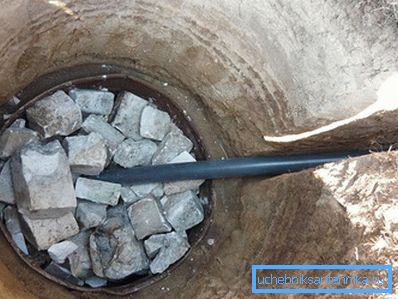
Four types of wells can be used in the drainage system. Each of them performs its function. Such structures include the following types of them:
- turning;
- lookout;
- collector;
- absorption.
In places of turns or bends of drainage pipes, as well as where several conduits come together, rotary wells are installed. They are necessary for cleaning possible blockages, because in these places a large amount of debris can be accumulated, washed away by the flow of water. Such wells are made in diameter of about 1 m.
Also for cleaning accumulated debris in the pipes, manholes are constructed. The diameter of such structures is 1 m.
The observation wells are similar to the turning ones, but they are installed both on the places of the system bends and on long straight sections.
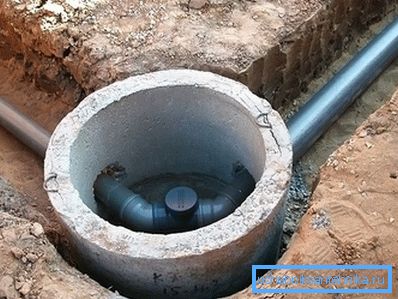
Absolutely for other purposes use absorption and collector drainage wells. Such facilities are designed to accumulate and further withdrawal of waste. Both devices are installed at the end (lowest) point of the entire drainage system. Manifold well is a reservoir. It accumulates water, which is subsequently pumped out with the help of a pump into a natural pond or ravine. The absorption well is installed in areas where it is not possible to withdraw accumulated water outside the adjacent territory. It is intended to dump drains into the ground.
Installation of the observation and collector wells
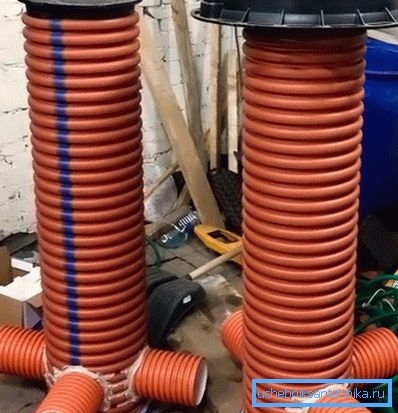
Before you do a drainage well with your own hands, you should choose the appropriate option. The simplest device has a swivel or viewing design. Very often they buy it already in finished form, along with drainage pipes. In this case, the well will be made of durable plastic, and installing it will not be difficult. But you can build from other materials.
Quite often for the construction of inspection or rotary drainage wells use concrete rings. Such products are durable and durable, and their size allows you to easily clean clogged pipes.
The collector drainage well has more impressive dimensions. A large volume of water will accumulate in this sealed container. For his device, you can use various materials. Among the most popular options are:
- Finished plastic products. They are a plastic sealed container, the volume of which will depend on the amount of water withdrawn from the site.
- Brick or concrete collector wells can be made independently.
Whatever material you choose, the first step is to prepare the foundation pit. It rummages in the lowest point of the entire drainage system and not far from the place where it is possible to discharge accumulated water.

After preparing the pit at the bottom of the suit a pillow. For this perfect sand large fractions. This material is poured to the bottom in a layer 30-40 cm thick and carefully tamped. After that, you can start creating a storage well. If the finished plastic container has been selected as such, then it is simply installed in the pit and sprinkled.
If you use brick or concrete for the construction of a collector well, you must first make a solid, hermetic base. To do this, a small reinforcing mesh is placed on a pillow of sand and everything is filled with concrete.
After solidification of the base, you can proceed to laying out the walls or pouring them with concrete. In this case, do not forget about the place of leading pipes. After hardening of the concrete (or in the case of cement mortar brickwork), dusting can be done. For these purposes, fine gravel or expanded clay is better suited.
We are building an absorption well
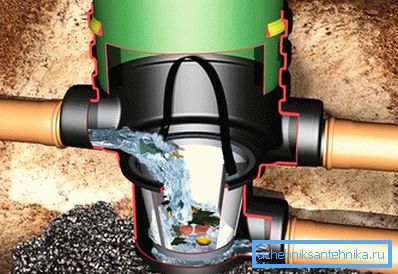
The device of a drainage well, which will divert water into the soil, looks different. It is important here that the drains are easily absorbed, so tightness is not needed. For the construction of such structures it is also possible to use ready-made plastic containers or concrete rings. The main thing is that the diameter of the resulting structure was more than 1.5 m.
At the first stage, as well as in the case with the collector well, the excavation is dug. Its depth will depend on the degree of permeability of the soil on the site. The worse it is, the more it is necessary to go deep. In any case, the depth of the pit should be at least 2–3 m.
After the foundation pit is ready, proceed to the following work:
- At the bottom we build a pillow of gravel. Its thickness should be between 30–40 cm.
- Then install plastic perforated container or concrete rings from above.
- Further, drainage pipes are supplied to the resulting structure.
- After that, broken bricks or gravel of large fractions fall asleep inside the pipe (or rings).
- Also sprinkling the space between the outer walls of the pipe (or rings) and the walls of the pit is done.
- After that, the top of the whole structure can be covered with geotextile and covered with soil.
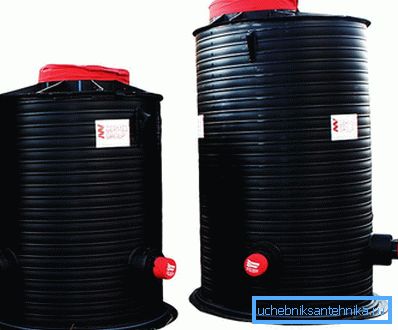
The effluent will flow into the pipe, and then into the filter layer (gravel pillow at the bottom). Filling the internal space of the tank will serve as an additional filter that will hold up large debris.
Video
More information about how to make a drainage system, including the drainage well, can be found by watching the video: